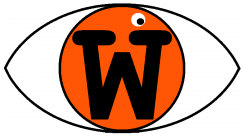WHAT’S IT ABOUT?
Paris, fifty years into the future.
When a young researcher, Ilona (Romola Garai), is kidnapped, her boss Dellenbach (Jonathan Pryce) – the head of the Avalon corporation – calls in top kidnap detective Karas (Daniel Craig) to find her.
During the course of his investigations, Karas discovers that under the surface, the squeaky clean Avalon is every bit as shadowy as Ilona’s kidnapper, and very quickly he’s making enemies.
His one ally in the search is Ilona’s sister Bislane (Catherine McCormack).
Karas finds out that Ilona’s research was linked to the research of the disgraced scientist Jonas Muller (Ian Holm), who’d been investigating human immortality.
As the trail gets warmer, Karas begins to doubt whether rescuing Ilona is the right thing to do after all.
WHAT’S IT LIKE?
The first unexpected thing to note about this film is that it’s a black and white animation – until last year’s Sin City, it would have been unheard of for a modern, dark, thriller, aimed very much at a grown-up audience.
Using a technique known as “motion capture,” at times, the characters seem disturbingly realistic. The buildings are a fascinating blend of classic Parisian architecture and ultra-modern designs, including glass walls and floors, separating the stylish supercars from the hoards of ant-like pedestrians.
Unlike Sin City, there’s no obvious reason why the film-makers chose animation to tell their story, but this choice was the film’s biggest success. It’s look.
The use of reflections is so impressive, it’s almost as if they were just trying to show off.
But the story itself is rather pedestrian – it blends elements of sci-fi and conspiracy thrillers with futuristic design.
It doesn’t really grab you – certainly not as much as the visuals do.
And having the characters appear in high-contast, monochrome animation, it’s harder to empathise with them than it would have been had they appeared in as humans.
This is one of those cases where an unexpected twist, near the end, helps to restore your interest – and faith in the story-tellers – as it adds an element of ambiguity and clouds the motives of the characters.
It’s interesting and highly imaginative, but not entirely successful or engaging.
